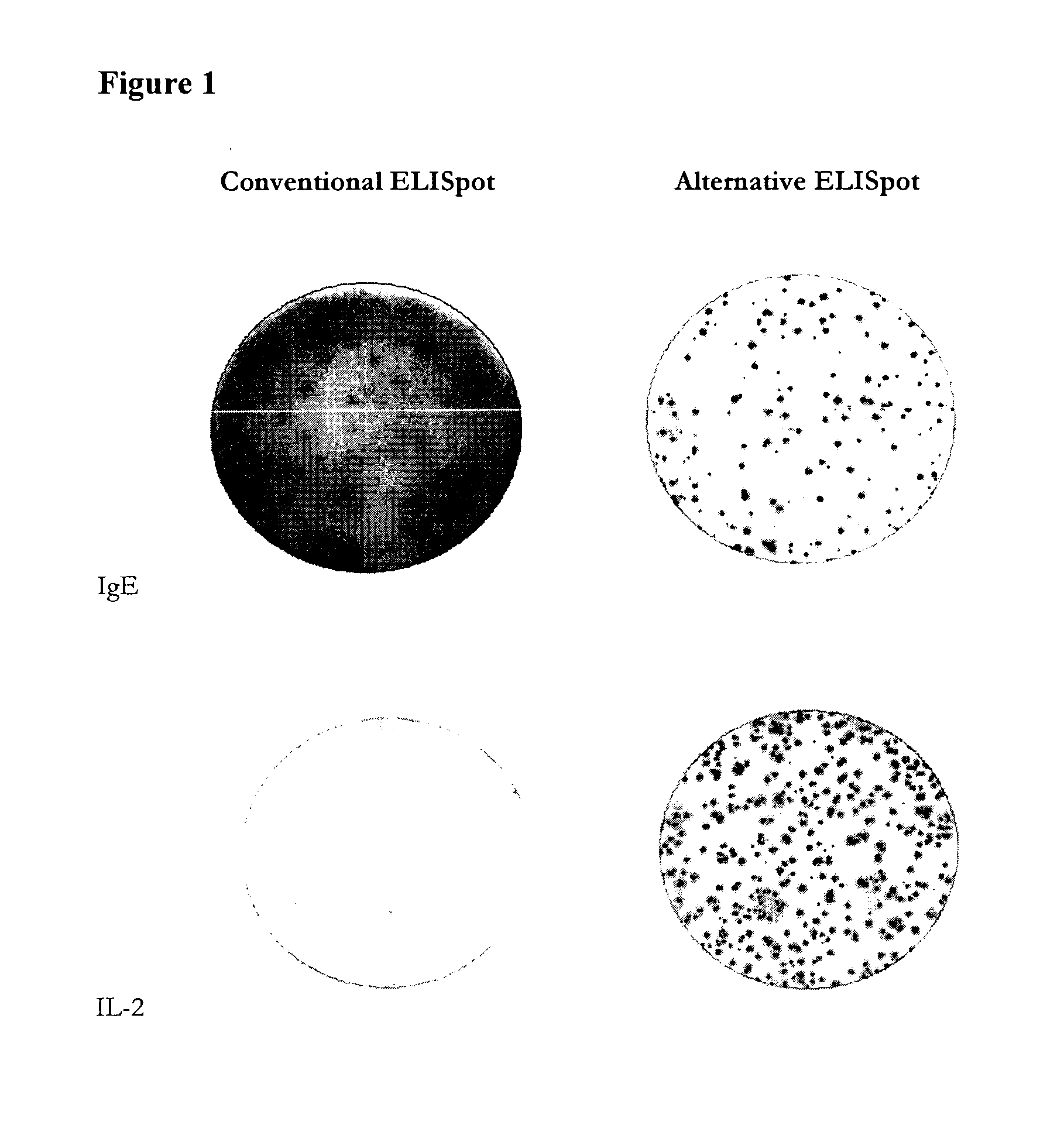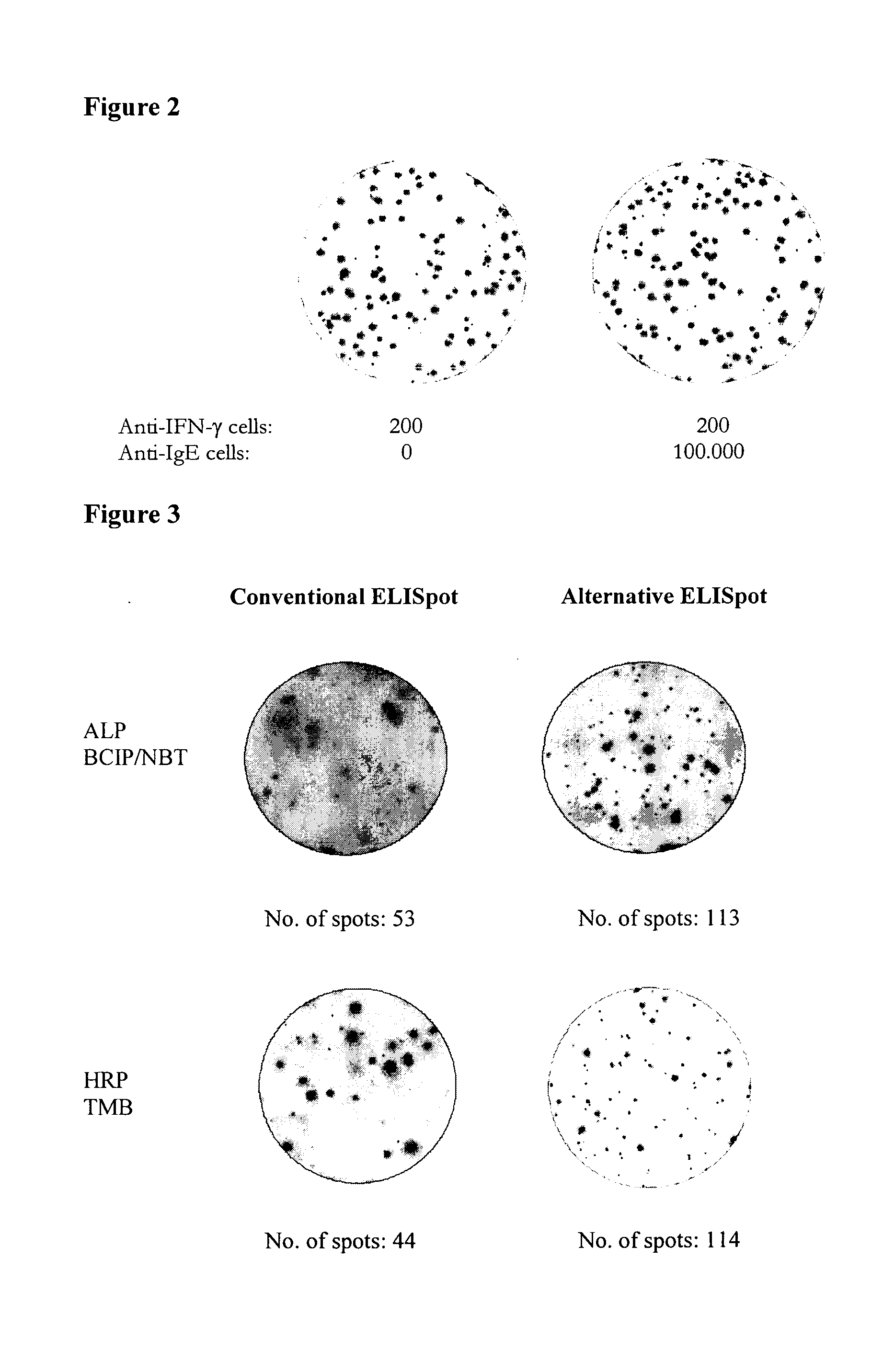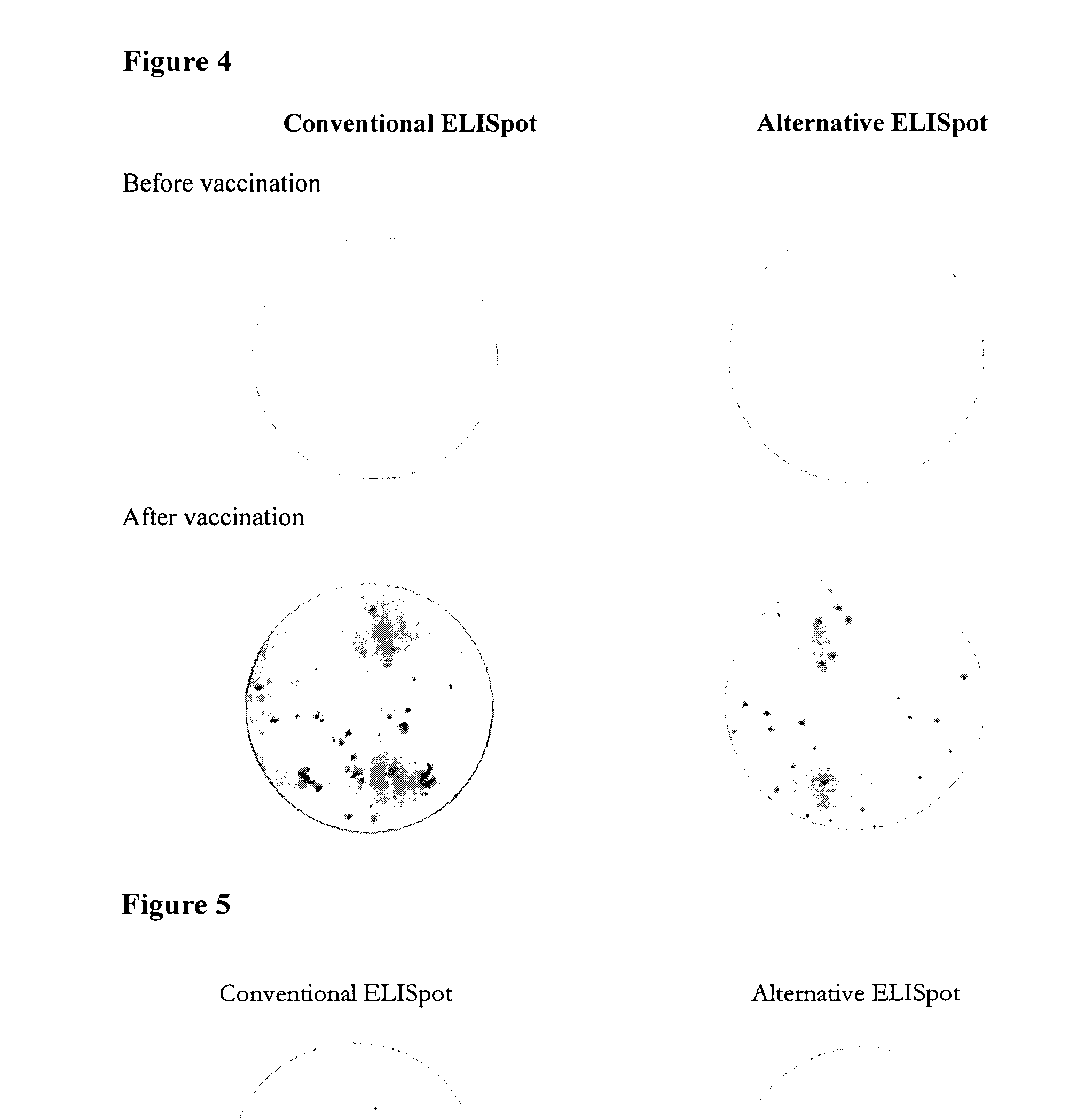Antibody-secreting cell assay
an antibody-secreting cell and assay technology, applied in immunoassays, instruments, material testing goods, etc., can solve the problems of limiting the availability of relevant antigen epitopes for antibody binding, the negative control may not always be negative, and the inability to reliably detect antibodies, etc., to achieve better control, predict and correlate, and improve the effect of the negative effect of antigenic agents
- Summary
- Abstract
- Description
- Claims
- Application Information
AI Technical Summary
Benefits of technology
Problems solved by technology
Method used
Image
Examples
example 1
Tests with Hybridoma Cells
[0285]Three different mouse anti-human hybridomas were used to test the principle of coating the ELISpot plates with anti-Ig antibodies and using a labelled antigen to detect the antibodies of interest (the alternative assay) and to compare the new method with the conventional ASC assay method in which the plates are coated with antigen and labelled anti-Ig antibodies are used to detect the antibodies bound to the immobilized antigen. The three hybridomas produced antibodies reactive with IgE, IFN-γ and IL-2 of human origin, respectively.
[0286]The proteins (IgE, IFN-γ and IL-2) were either used for coating as in the conventional B-cell ELISpot or biotinylated forms of the proteins were used as detection reagents in the alternative assay. The proteins were biotinylated according to a regular protocol for biotinylation.
[0287]In brief, ELISpot plates with PVDF membranes (MAIPSWU, Millipore) were first preactivated by incubating with 50 μl 70% ethanol for 2 min...
example 2
Tests with Immunized Mouse Cells
[0294]The alternative assay method was also compared to the conventional method using freshly isolated spleen cells from mice immunized with ovalbumin. Experiments were performed similarly to above using either ovalbumin coated to the ELISpot plates (15 μg / ml; 100 μl / well) and biotinylated goat anti-mouse Ig for detection (i.e. conventional ELISpot) or wells coated with goat anti-mouse Ig (15 μg / ml; 100 μl / well) and biotinylated ovalbumin (0.5 μg / ml; 100 μl / well) for detection (i.e. alternative assay). In the last step Streptavidin-enzyme (alkaline phosphatase (ALP) or horseradish peroxidase (HRP)) was added followed by development with the appropriate substrate (BCIP / NBT and tetramethylbenzidine (TMB), respectively). As the frequency of cells producing specific antibodies are here much lower, more cells were used in the wells (200,000 cells / well).
[0295]As seen in FIG. 3, and in line with the previous observations, more spots were observed when using ...
example 3
Tests with Human Cells from Vaccinated Individuals
[0296]To further demonstrate the general utility of the alternative approach, peripheral blood mononuclear cells (PBMC) were prepared from individuals before and after vaccination with the cholera toxin vaccine, DUKORAL®. This vaccine is administered orally and designed to give good mucosal protection with induction of Cholera toxin specific IgA and IgG antibodies.
[0297]As before, the antigen (the vaccine was used as antigen source) was either coated to ELISpot plates or was biotinylated and used for detection. As seen in FIG. 4, no spots were observed before vaccination whereas similar numbers of specific IgA spots were observed with both methods after vaccination. As earlier and in spite of any optimization (biotinylation was performed under suboptimal conditions due to shortage of antigen) spots were of significantly better quality and more easily evaluated when biotinylated antigen was used for detection compared to when the anti...
PUM
| Property | Measurement | Unit |
|---|---|---|
| volume | aaaaa | aaaaa |
| volumes | aaaaa | aaaaa |
| volumes | aaaaa | aaaaa |
Abstract
Description
Claims
Application Information
 Login to View More
Login to View More - R&D
- Intellectual Property
- Life Sciences
- Materials
- Tech Scout
- Unparalleled Data Quality
- Higher Quality Content
- 60% Fewer Hallucinations
Browse by: Latest US Patents, China's latest patents, Technical Efficacy Thesaurus, Application Domain, Technology Topic, Popular Technical Reports.
© 2025 PatSnap. All rights reserved.Legal|Privacy policy|Modern Slavery Act Transparency Statement|Sitemap|About US| Contact US: help@patsnap.com



